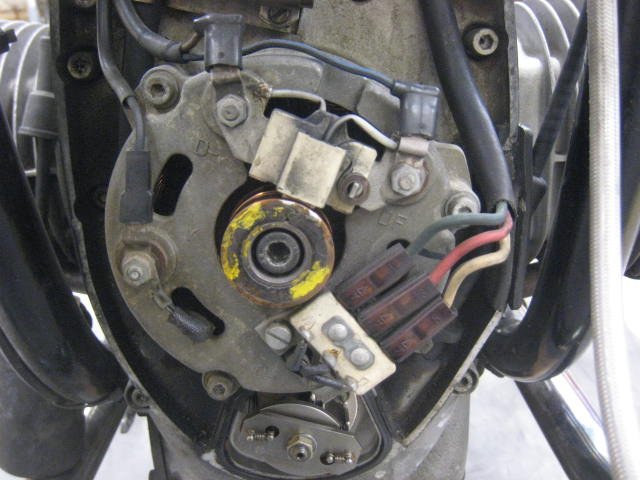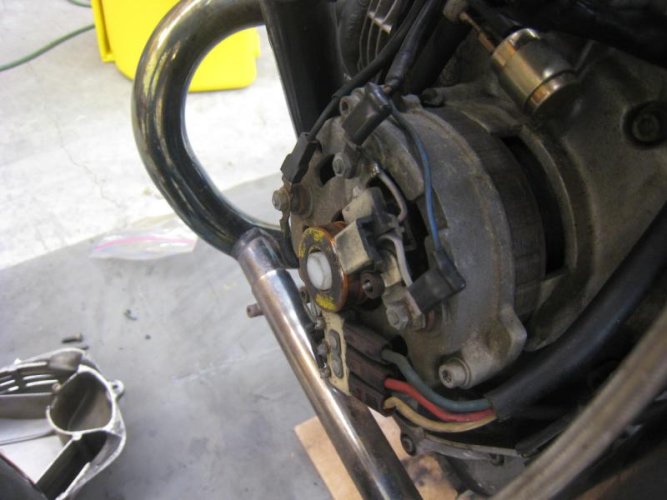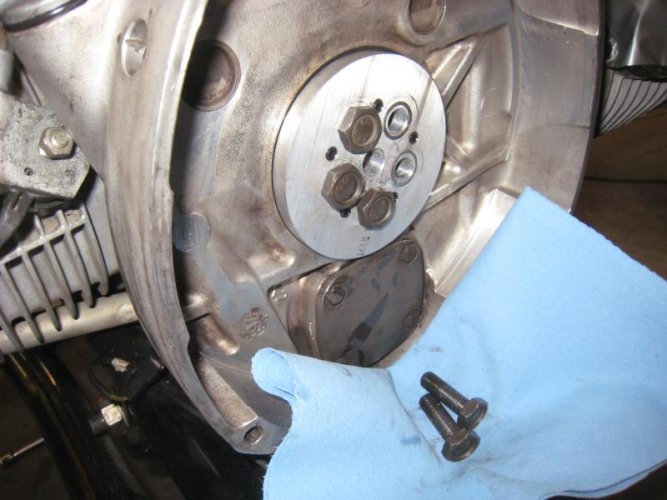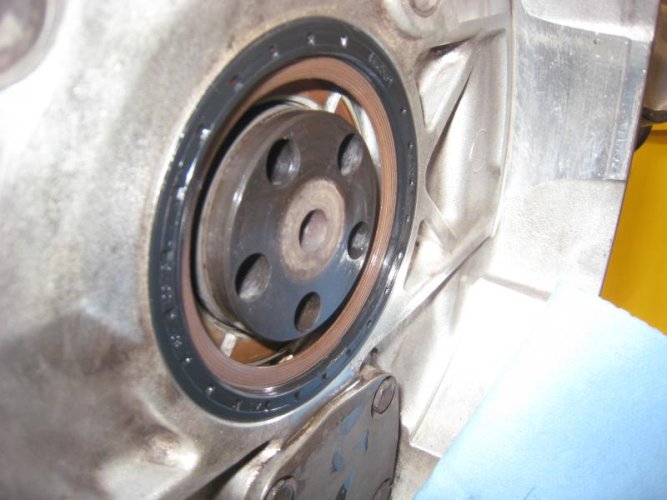kwb210
New member
The patient: 1977 R100/7 72,000 miles
I'm in the middle of replacing clutch and of course the rear seal. I have the tool from Northwoods for blocking the crank and am confused. Where exactly does the crankshaft blocking bolt go? I am guessing I need to remove the alternator? First the allen in the middle, by the yellow marks, and then the three allens holding the alternator on after first removing a few wires. Will the alternator just easily pull forward ond off?
Then insert the bolt into the center where the first fairly long allen was, then replace the alternator so it holds the bolt in place?
Replace the rear seal, I have Northwoods rear main seal installer, install flywheel, new bolts from Hucky's, and complete the clutch install, then remove blocking bolt and alternator back into place. Any repairs/maintenance needed on alternator?
Clutch was down to .19 inch and the spec said .177 inch, I happen to have a caliper in inches not mm like I would prefer.
Thanks!
Kurt
I'm in the middle of replacing clutch and of course the rear seal. I have the tool from Northwoods for blocking the crank and am confused. Where exactly does the crankshaft blocking bolt go? I am guessing I need to remove the alternator? First the allen in the middle, by the yellow marks, and then the three allens holding the alternator on after first removing a few wires. Will the alternator just easily pull forward ond off?
Then insert the bolt into the center where the first fairly long allen was, then replace the alternator so it holds the bolt in place?
Replace the rear seal, I have Northwoods rear main seal installer, install flywheel, new bolts from Hucky's, and complete the clutch install, then remove blocking bolt and alternator back into place. Any repairs/maintenance needed on alternator?
Clutch was down to .19 inch and the spec said .177 inch, I happen to have a caliper in inches not mm like I would prefer.
Thanks!
Kurt






